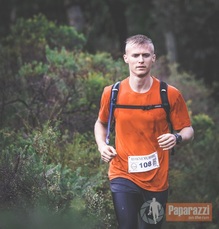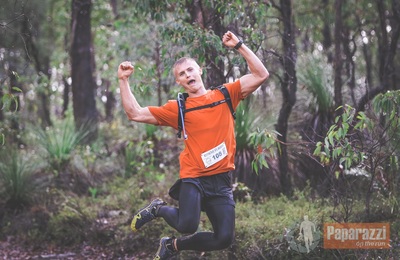 This weekend I took part in a race called the Eagle and Child organised as part of the Perth Trail Series. It was a 22km trail run (+/- 600m elevation change) held in John Forrest National Park in Western Australia. This is the first trail run I have taken part in this year and I absolutely loved it. I entered the race with only minimal training and with a cold, so was happy to finish with a time of 2hrs 31minutes. The race started at the front of the Tavern and followed the Eagle View hiking trail for most of the run, plus a slight couple of km extra loop. The course contained some fairly technical sections, which were even more challenging due to the wet weather, and had a great mix of single trail and fire-road's. Due to the course heading almost straight away into single trail it caused a few hold ups for those further back in the pack near the start of the race. However, everyone seemed to self-seed rather well which meant that it didn't really matter to those who were held up (they seemed to quite enjoy the easy start). As usual the race was really well run and had a fantastic atmosphere, I really can't pick any major faults with these Perth Trail Series runs. They are well organised, provided excellent supplies at the aid stations, fantastic spot prizes at the end, and overall have a friendly, inviting atmosphere. If you are looking for something a little more interesting and challenging than road running you should check out their runs. For more information about these trail runs head to Perth Trail Series (www.perthtrailseries.com). They are also about to start weekly runs, so get in touch if you are interested. The fantastic photo's below are from Paparazzi on the run & some other race volunteers. (facebook: http://www.facebook.com/PaparazziOnTheRun) This article can be found at: http://www.biomedcentral.com/1471-2474/11/64
This study looked at whether the addition of a sports chiropractic manual therapy intervention protocol to the current best practice management could prevent and reduce weeks missed due to the occurrence of lower-limb injuries, including hamstring strains in semi-elite AFL players. Compared with other body contact football codes, AFL has the highest rates of non-contact soft tissue injuries with an incident rate of 35% per season at the elite national level. Two Victorian Football League (VFL) clubs partook in the study during the 2005 season with a total of 59 participants. The players at each club were randomized into two groups, a control group (n=30) and an intervention group (n=29). Both groups received what is currently considered the best practice medical, paramedical and sports science management; including medication, manipulative physiotherapy, massage, strength & conditioning and rehabilitation by club staff. All treatment from club staff was independently administered without restriction to type or number of treatments. The intervention group also received a sports chiropractic approach administered by a single practitioner (including chiropractic/HVLA manipulation and soft-tissue therapies). Each athlete in the treatment group received varied treatment and scheduling as determined by the chiropractor. The intervention group had a statistically significant reduction in risk or primary lower limb muscle strain injury (3.6% in the intervention group and 27.6% in control group). The intervention group missed 4 matches with a lower limb muscle strain and the control group missed 21 matches. Although there was no statistically significant reduction in knee or hamstring injuries, rates were overall lower in the intervention group. Treatment was predominantly directed at non-local factors and areas, supporting previous evidence that several non-local factors may contribute to lower-limb injury occurrence. Some care does need to be taken in interpreting these results as 2 of the initial 4 teams withdrawing prior to the study starting means that the required subject numbers were no met. Due to hesitation by the clubs a non-blinded study design was utilised, which means that a placebo effect cannot be ruled out. Since the date of publishing the study has also been retracted from the journal due to issues with the original ethics approval of this study. Overall there appears the be a trend in the reduction of lower limb injuries with the addition of preventative sports chiropractic intervention to the current best practice multidisciplinary medical, paramedical and sports science management. There also appeared to be a reduction in low-back injuries and complains in the intervention group. Hoskins W., Pollard H. “The effect of sports chiropractic manual therapy intervention on the prevention of back pain, hamstring and lower limb injuries in semi-elite Australian Rules footballers: a randomized controlled trial”. BMC Musculoskeletal Disorders. (2010); 11:64. accessed 17/06/15 from: http://www.biomedcentral.com/1471-2474/11/64 |
AuthorDr Adam Rowney - Categories
All
Archives
December 2020
|
|
Cockburn (Primary Clinic)
Unit 9E/817 Beeliar Drive, Cockburn Central Western Australia 6164 Beckenham (inside Fitness HQ) Unit 3 / 383 Sevenoaks St, Beckenham Western Australia 6107 |




 RSS Feed
RSS Feed
